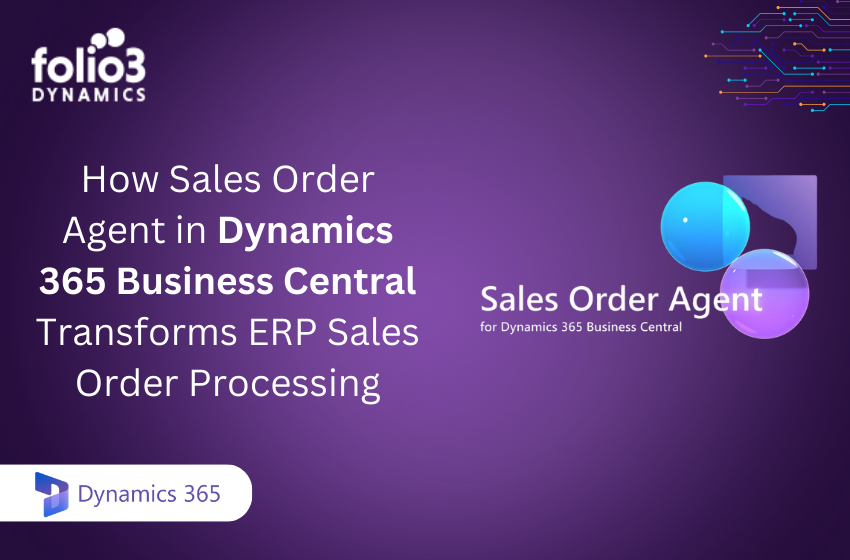The retail industry is very well aware of the importance of inventory in an organization. They know better inventory management means faster growth. But inventory management is not an easy task to handle. It involves several different steps from the minute a customer places an order on the website to the time till the product arrives at your doorstep. All these processes are part of a well-managed inventory chain.
The simplest hack to deal with such a difficult task is to monitor your inventory performance. Wondering how you do that? Inventory KPIs are the answer to all your questions. So let’s dive into it.
Inventory Metrics: Understanding Key Performance Indicators in Inventory Management
Inventory metrics, often referred to as Key Performance Indicators (KPIs), play a pivotal role in the realm of inventory management. These metrics serve as essential measuring tools employed by organizations to effectively monitor their performance, enabling them to make informed decisions regarding stock management and subsequent enhancements.
The significance of KPIs in inventory management cannot be overstated, as they provide valuable insights into various facets of the inventory lifecycle, including turnover, sales, demand forecasting, and associated expenditures.
Leveraging inventory KPIs is a straightforward means of optimizing overall performance. These metrics not only pinpoint areas of concern within the inventory management process but also illuminate avenues for improvement. The end result is an overall enhancement in operational efficiency, leading to increased sales revenue for the organization.
What Are Key Performance Indicators (KPIs)?
A key performance indicator or KPI is a quantifiable measuring metric that is associated with measuring the performance of a company. Tracking KPIs in a business helps them keep a track of the business objectives and helps them achieve them. This way, businesses can make the right decision to achieve those goals.
Key Performance Indicators (KPIs) are essential factors that are used by many businesses to optimize growth. These factors assist them in analyzing their manufacturing processes, which are then used to evaluate their success in relation to the organization’s predetermined goals and objectives.
KPIs are important because they help you understand where you as an organization stand. It helps you set goals and gives you a deep insight into if you are making progress or not, if you are achieving your goals or not, and if you’re headed in the direction you want.
What Is a Key Performance Indicator in Inventory Management?
Key performance indicators (KPIs) in inventory management are measuring tools used by organizations mainly to help them monitor their performance and make decisions about the stock and improvements accordingly. KPIs matter a lot in inventory management because these tools offer insights into the turnover, sales, demands, and expenses related to all the processes.
It is very easy to use inventory KPIs to optimize your overall performance. These metrics can tell you what goes wrong in the process and what improvements need to be made. This increases the overall performance and efficiency of the company and increases the sales revenue.
How Do You Measure Inventory Management?
Businesses never confine themselves to a single type of metrics for assessing their performance. They use several metrics at the same time which helps them get insights into different processes taking place in the business. These KPIs help them achieve their business goals. For ease, inventory KPIs can be categorized into subtypes because it lets managers focus on areas in the need of improvement. Managers discover the areas where further improvement is required and boost their overall performance. These subtypes of KPIs include:
- Sales KPIs
- Receiving KPIs
- Operational KPIs
- Employee KPIs
Inventory Metrics: Sales KPIs
Sales metrics can be used to stay competitive in the market. This helps your sales team to crack deals and collaborate with other clients. If you wish to achieve your organizational goals, inventory KPIs are a must-have for you because it optimizes the sales teams’ performance.
- Inventory Turnover Rate
Inventory turnover rate is the total number of times the entire stock in the inventory gets replaced by the company. It is also known as the inventory turnover ratio or inventory turn. In simple words, it is the rate at which and inventory item is either sold, used or replaced by the newer items.
- Days on Hand
Days on Hand in simple words is the measurement of how fast an item in the inventory is sold on average. It is also called data to sell inventory, this KPI tells about the rate of inventory turns by day. This daily interval is the most common timeframe after an annual range.
- Weeks on Hand
Weeks on hand like days on hand is also the measurement if how fast an item on hold in the inventory is sold. It is the average amount of time inventory sells per week. A higher value shows inefficient movement, while a low week-on-hand rate shows efficient inventory movement.
- Stock to Sales Ratio
The stock sales ratio measures the estimated amount of inventory in the storage space in relation to the quantity of sales of that particular item from the inventory. Stocks to sales ratio KPI can be used to modify the stock according to the demand of an item in the market.
Inventory Metrics: Receiving KPIs
Receiving KPIs may overlap with operational KPIs and convey essentially the same information. These metrics are specially designed for the process and cannot be used in all the processes as described below:
- Time to Receive
Time to receive is a receiving KPI that measures or estimates the rate at which the stock in the inventory is brought in and is prepared to be sold. This metric essentially measures the efficiency of a company’s stock-receiving capacity and process.
- Put Away Time
Put away time is a receiving KPI to estimate the total time taken by an inventory to store the items in inventory properly.
- Supplier Quality Index
This KPI is supposed to measure the quality of the supplier and estimate the overall performance of the dealer or vendor in significant areas such as quality of the material sent, corrective actions taken by the vendor, prompt replies, the quality of the delivery process, and commercial posture.
Inventory Metrics: Operational KPIs
Operational KPIs in inventory metrics tell how well your coolant is running or operating.
- Lost Sales Ratio
The lost sales ratio is an operational KPI used to estimate the total number of days a specific product has been out of stock and is unavailable in stock when compared to the expected rate of sales for that product. This means that the sales for that product are high, but your company doesn’t have that product in stock.
- Perfect Order Rate
Perfect order ratio as the name implies is the measure of the total number of products delivered by a company without facing any sort of issue like damage, inaccuracies, or delays in the delivery.
- Inventory Shrinkage
Inventory shrinkage is another operational KPI used to gauge the number of inventory items a company should have with them in the inventory but cannot account for. These products are listed for sale by the company, but the vendor doesn’t have these products or cannot sell them.
Inventory Metrics: Employee KPIs
Employee key performance indicators are also called labor KPIs. These KPIs, in simple words are used to assess the performance of the employees handling the inventory management. If these outcomes are better it shows that your business performs well overall and the overall performance of the employee is remarkable as well.
- Labor Cost per Item
Labor cost per item is also called unit labor cost. This is the total expenses of a company on a single product in their inventory. This means this KPI tells you what money your company is spending on what product and these expenses include all the costs like workers’ wages and any additional costs of moving a particular product through production to sell.
- Labor Cost per Hour
Labor cost per hour as the name implies is that total amount spent by a company on an employee that works in that company on an hourly basis.
How to Choose the Right Inventory Management KPIs for your Company
When selecting the right inventory KPIs, consider the following factors:
- Relevance:
Choose inventory KPIs that are relevant to your business goals if you wish to keep an eye on the sales, go for the sales inventory KPIs, and if you wish to keep a record of the entire process of inventory storage, use operational KPIs.
- Measurability:
Ensure that the inventory KPIs you choose can be accurately measured and tracked. Never go for KPIs that are intractable.
- Actionability:
Pick inventory KPIs that can be acted upon, and that drive positive changes in the customer experience and increase your sales experience.
- Alignment with business goals:
Make sure that the inventory KPIs align with the overall goals of the business.
- Trending:
Select inventory KPIs that can be tracked over time, to understand trends and identify areas wherever more improvement is required.
You can follow the SMART criteria to select the right KPI for your inventory management process.
You should choose the inventory management KPIs most suitable for your business. SMART stands for specific, measurable, achievable, relevant, and timely.
Why Are Inventory Key Performance Indicators Important?
Inventory Key Performance Indicators (KPIs) are important in any type of business because they provide companies with a way to measure and track their progress toward specific goals and objectives and make improvements when and where necessary. By regularly monitoring inventory KPIs, businesses can:
- Measure success:
Key performance indicators help companies figure out how well they are performing in different fields of the business and specify whether they are on track to achieve their goals or not.
- Make informed decisions:
KPIs also provide a basis for companies to make data-driven decisions, allowing businesses to make informed selections about where to distribute resources, how to utilize them, and which strategies to pursue to increase the overall productivity of the company.
- Identify areas for improvement:
Regular monitoring of performance through KPIs helps businesses specify areas where they are underperforming and should make improvements.
- Track progress:
KPIs also allows companies and businesses to track progress over time and estimate the consequence of changes made to an organization’s strategy or operations. Such KPIs help them identify if their employees have adapted to the changes made or not and whether their performance is optimized or not.
- Communicate performance:
KPIs provide an obvious, factual way to convey the reports of the performance to stakeholders, including employees, customers, shareholders, and investors to make them aware of the situation. This helps them recognize their weak areas individually and improve them to allow companies to achieve their goals efficiently.
Benefits of Inventory KPIs:
There are several benefits of such KPIs and a few of them are:
- Sales revenue increase
- Customer satisfaction improved
- The company’s prestige gets better
- The overall productivity of the employee and operation increases
- Operating expenses decreased
- Remove supply chain issues.
- Ensure marketing and merchandising are effective in the company to increase sales revenue.
FAQs
What are Key Performance Indicators?
Key Performance Indicators are estimates used to assess the performance of a business. KPIs can be quantitative or qualitative and are targets that can help you estimate your overall progress against your most strategic objectives.
Why are key performance indicators so important?
KPIs are important because they help you understand where you as an organization stand. It helps you set goals and gives you a deep insight into if you are making progress or not, if you are achieving your goals or not, and if you’re headed in the direction you want.


